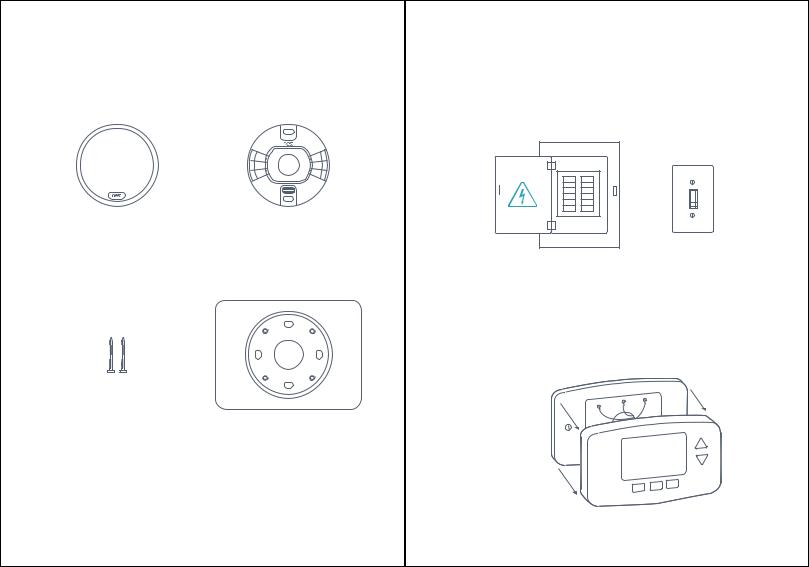Google Nest T4001ES Installation Guide

Thermostat E
Installation Guide

We take your privacy seriously
We’re committed to being open and honest about how we use data. We’ll always ask for permission before sharing personally identifiable information like your email address, and we keep your data safe with industry standard security tools. To learn more about our Privacy Policy, go to nest.com/privacy
Compatibility
The Nest Thermostat E works with most 24V systems, including forced air, variable speed, heat pump and radiant systems, as well as common fuel types such as natural gas, electricity and oil.
It can control:
•Heating and cooling: one stage of heating and cooling, and a second stage of either heating or cooling
•Heat pumps: with auxiliary and emergency heat
•Fans: one speed
You can check your system’s compatibility at nest.com/works
Professional installation is recommended for dual fuel systems (heat pump with furnace).
Watch the video
To see an overview of how to install the Nest Thermostat, visit support.nest.com/thermostat-e
¿Prefieres leer esto en español? Visita nest.com/es-guide
Don’t want to install your
Nest Thermostat yourself?
The Nest Thermostat is designed for DIY installation, but you can also hire a Nest Pro to do it for you. They’ll take care of installation and make sure everything’s up and running. Go to nest.com/install to fiind a Nest Pro installer near you.

In the box |
|
|
|
|
|
1. Switch off power |
|
|
|
|
|
|
This protects you and avoids blowing a fuse in your |
|
|
|
|
|
|
equipment. To make sure the power is off, change |
|
|
|
|
|
|
the temperature with your current thermostat |
|
|
|
|
|
|
and wait at least five minutes to be sure that your |
|
|
|
|
|
|
system doesn’t turn on. |
|
|
|
|
|
|
|
or
Display |
Base |
|
|
Breaker box |
System switch |
2. Remove the cover
Some thermostat covers pop off, while others need to be unscrewed. Older thermostats may have a second plate that should also be removed to expose the wires.
Wall screws |
Trim plate |

3.Take a picture of the wires
Take a picture of your thermostat’s wires and save it for reference. Make sure you can read the wire terminal labels.
B O G Y W NOT A AC
USED
IMPORTANT:If there are two labels on your thermostat’s wire connectors, go to nest.com/labels for detailed help and instructions.
Incompatible wiring and voltage
Stranded wires
Stranded wires aren’t compatible with the Nest Thermostat.
High-voltage wires
If your thermostat is labeled 120V or 240V, or has thick wires with wire nuts, or has L1 and L2 terminal blocks, your system
is high voltage and isn’t compatible with the Nest Thermostat.
